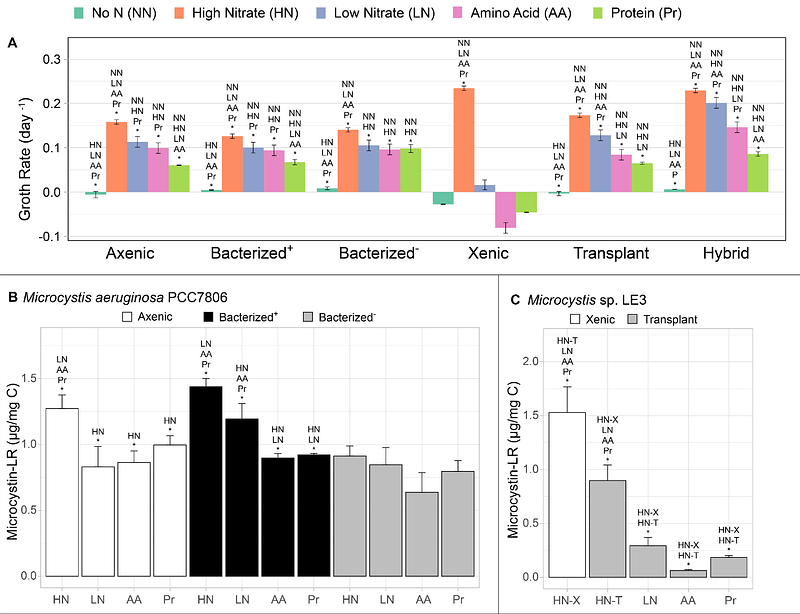THE DUAL ROLE OF THE MICROCYSTIS AERUGINOSA MICROBIOME ON CYANOTOXIN PRODUCTION: COMPETITION FOR AND REMINERALIZATION OF ORGANIC NITROGEN

THE DUAL ROLE OF THE MICROCYSTIS AERUGINOSA MICROBIOME ON CYANOTOXIN PRODUCTION: COMPETITION FOR AND REMINERALIZATION OF ORGANIC NITROGEN
Li, W.; Baliu-Rodriguez, D.; Premathilaka, S. H.; Thenuwara, S. I.; Kimbrel, J. A.; Samo, T. J.; Ramon, C.; Kiledal, E. A.; Rivera, S. R.; Kharbush, J.; Weber, P.; Dick, G. J.; Isailovic, D.; Mayali, X.
AbstractNutrient-induced blooms of the globally abundant freshwater toxic cyanobacterium Microcystis are the cause of worldwide public and ecosystem health concerns. The response of Microcystis growth and toxin production to new and recycled nitrogen (N) inputs, and the impact of heterotrophic bacteria in the Microcystis phycosphere on these processes are not well understood. Here, using microbiome transplant experiments, cyanotoxin analysis, and stable isotope tracing to measure N incorporation and exchange at single cell resolution, we monitored the growth, cyanotoxin production, and microbiome community structure of several Microcystis strains grown on amino acids and proteins as the sole N source. We demonstrate that 1) organic N availability shapes the microbiome community structure in the Microcystis phycosphere; 2) external organic N input leads to lower bacterial colonization of the phycosphere; 3) certain Microcystis strains can directly uptake amino acids, but with lower rates than heterotrophic bacteria; 4) biomass-specific microcystin production is not impacted by N source (i.e., nitrate, amino acids and protein) but rather by total N availability; and 5) some bacterial communities compete with Microcystis for organic N, but others remineralize organic N, in the process producing bio-available N for Microcystis. We conclude that organic N input can support Microcystis blooms and toxin production, and Microcystis-associated microbial communities play critical roles by influencing cyanobacterial succession through either decreasing (via competition) or increasing (via remineralization) N availability, especially under inorganic N scarcity.